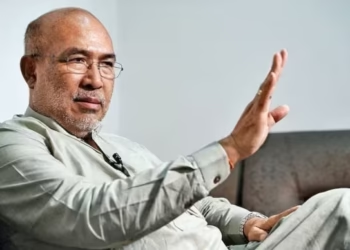The crash of Air India’s 787 Dreamliner has wiped billions off Boeing’s market value, with shares tumbling over 5% at the New York open.
BY PC Bureau
New Delhi, January 25:, Boeing Co. shares fell more than 5% at the New York open after an Air India–operated Boeing 787‑8 Dreamliner crashed in Ahmedabad on June 12. The aircraft, Flight AI‑171 bound for London Gatwick, went down in the Meghaninagar residential area shortly after takeoff, with all 242 people on board—including 10 crew members and three infants—perishing in the first fatal accident involving a 787.
Prior to this, Boeing stock had dipped 0.8% to $214 on Wednesday, marking two consecutive days of decline. Earlier this year, U.S. regulators had ordered inspections of Dreamliner aircraft after a dramatic mid-air descent in March 2024. Boeing has also faced notable setbacks recently, including the December 2024 Jeju Air Boeing 737‑800 crash in South Korea, which claimed 179 lives.
Whistleblower Claims Resurface Amid Investigation
The catastrophe has brought renewed attention to warnings from Boeing quality engineer Sam Salehpour, who in April 2024 testified before a U.S. Senate committee that manufacturing shortcuts on the Dreamliner could turn it into a “ticking time bomb.” Salehpour alleged that misaligned fuselage parts were being forced together in over 1,000 aircraft—a claim that Boeing dismissed, citing rigorous safety testing and maintenance.
READ: AI171 Crash: Whistleblower’s Called Dreamliner ‘Time Bomb’
As investigators examine the Ahmedabad crash—highlighting a brief MAYDAY call, a peak altitude of only 625 feet, and a rapid plume descent—Salehpour’s alarmist label has resurfaced. While Boeing maintains no immediate safety risk was detected during previous inspections, the company has expressed “deep sorrow” and pledged full cooperation with the Directorate General of Civil Aviation (DGCA), FAA, UK Air Accidents Investigation Branch, and Air India.
Fleet Safety in Question
Aviation experts caution that crashes rarely stem from a single cause; pilot error, environmental factors, or mechanical failure could all play roles. The Dreamliner had previously received global scrutiny following battery fires in 2013 but had maintained an exemplary track record—until now. The unfolding probe will need to determine whether Salehpour’s alleged structural defects played any role, or if other factors were at play.
READ: Air India Crash: Entire Family from Surat Wiped Out
Aftermath and Fallout
Residents of Ahmedabad are witnessing a massive search and recovery operation across a 1.5-mile crash site now sealed by authorities. In response, Prime Minister Narendra Modi conveyed condolences and promised support for the bereaved, while Air India grounded all 787 operations pending initial findings. The crash has also reignited debates around aircraft safety, industry oversight, and Boeing’s internal culture—already strained by earlier 737 MAX controversies.
As global regulators and aviation authorities await black box data, the question looms: will Sam Salehpour’s dire prophecy prove prescient, or will investigators identify more prosaic causes behind the tragedy? For the families of the 242 victims, meaningful answers and accountability cannot come soon enough.













